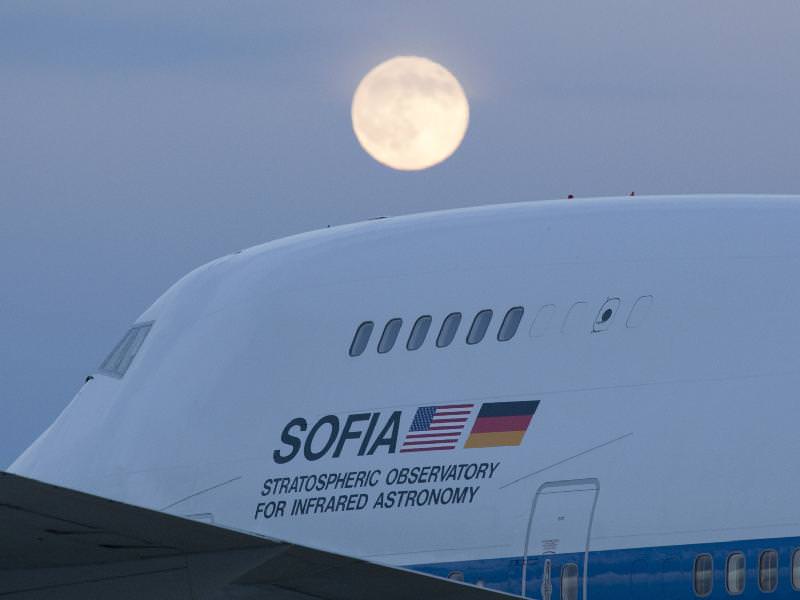[/caption]
SOFIA, NASA's airplane-based Stratospheric Observatory for Infrared Astronomy made its first science flight on Wednesday, to help demonstrate the aircraft's potential to make discoveries about the infrared universe. The new observatory uses a modified 747 airplane to carry a German-built 2.5 meter (100 inch) reflecting telescope, and on its initial flight to gather science data, the plane flew for about 10 hours.
"These initial science flights mark a significant milestone in SOFIA's development and ability to conduct peer-reviewed science observations," said NASA Astrophysics Division Director Jon Morse. "We anticipate a number of important discoveries from this unique observatory, as well as extended investigations of discoveries by other space telescopes."
SOFIA is anticipated to have a 20-year lifespan that will enable a wide variety of astronomical science observations not possible from other Earth and space-borne observatories.
Cruising at altitudes between 39,000 and 45,000 feet, researchers hope to study how stars and planets are born, how organic substances form in interstellar space, and how supermassive black holes feed and grow.
SOFIA is a 100-inch diameter infrared telescope, and the instruments can analyze light from a wide range of celestial objects, including warm interstellar gas and dust of bright star forming regions, by observing wavelengths between 0.3 and 1,600 microns. A micron equals one millionth of a meter. For comparison, the human eye sees light with wavelengths between 0.4 and 0.7 microns.
The first three science flights, phase one of SOFIA's early science program, will employ the Faint Object InfraRed Camera for the SOFIA Telescope (FORCAST) instrument developed by Cornell University and led by principal investigator Terry Herter. FORCAST observes the mid-infrared spectrum from five to 40 microns.
Researchers used the FORCAST camera on SOFIA during a test flight two weeks ago to produce infrared images of areas within the Orion star-formation complex, a region of the sky for which more extensive data were collected during the Nov. 30 flight. The image below is of this region. Y
ou can see more images at this link.
[caption id="attachment_81104" align="aligncenter" width="580" caption="This infrared image of the heart of the Orion star-formation complex was taken by SOFIA's FORCAST mid-infrared camera. Credit: NASA"]
[/caption]
SOFIA flies from NASA's Dryden Aircraft Operations Facility in Palmdale, California.
 Universe Today
Universe Today
